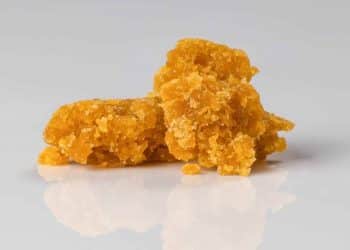The integration of hemp fibers in textiles is not a recent phenomenon. Valued for properties like high tensile strength, hemp has been cultivated for thousands of years. Now, the combination of advanced textile engineering and modern cultivation practices is yielding innovations in bioactive hemp clothing production.
The Research
A 2021 study published in Materials looked at “biologically active functional clothing made of pure industrial hemp raw materials”. [1] The fabrics were brushed with cannabidiol (CBD) to achieve a more pronounced bioactive effect.
Researchers found that subjects who wore the specially treated clothing experienced skin improvements over six weeks, including increased hydration and lubrication. Furthermore, the CBD-treated fabrics enhanced skin barrier function. These and similar improvements induced by the clothing could help slow down skin aging.
Why Use CBD in Bioactive Hemp Clothing?
CBD is a common ingredient in the healthcare industry because of its potential to reduce anxiety, relieve pain and inflammation, and even improve sleep. Within skin care specifically, CBD is lauded as a safe and effective treatment for skin issues like acne and psoriasis. [2]
By 2028, the CBD skincare market is expected to be worth $3168.44 million globally. The introduction of bioactive hemp clothing has the potential to accelerate this growth.
Why Hemp?
Hemp clothing appeals due to its inherent properties. For instance, hemp is sustainable. It has a short growing period, high yield, and natural pest resistance. It also requires very little water and is a carbon-negative crop, absorbing CO2 while growing.
As a fabric, hemp is hypoallergenic, antimicrobial, and breathable yet strong enough to last even after many washes and wears. Additionally, hemp fabrics are naturally UV-resistant and will not fade in the sun.
What’s New
Traditionally, natural hemp fibers were used to make clothing. However, the process stripped phenolic acids from the fiber, reducing its bioactivity. Phenolic acids are plant compounds that many scientists believe contain antioxidant properties.
Fiber bioactivity is retained through mechanical extraction, but the resulting fibers are coarse and unsuitable clothing. In the 2021 study, researchers found a way to preserve natural phenolic acids in hemp fabric without sacrificing desirable textile qualities. They used advanced technological processes to create the fibers and then applied CBD.
The beneficial results experienced by patients wearing the clothing may have come from the CBD alone or could be attributed to the combination of CBD and other hemp components.
Disadvantages of Bioactive Hemp Clothing
Bioactive hemp textiles are not yet available to the public. They are still in the early stages of development and require further study to determine their safety and efficacy. Also, because hemp is a natural fiber, it’s more expensive than synthetic materials.
Hemp can be grown in many climates, but it’s currently produced at a low rate. Two hundred seventy-five thousand tons of industrial hemp were produced in 2019, compared to 27 million tons of cotton. The cultivation rate is growing, but it’s hampered by restrictions. Many countries limit hemp production due to its link to high tetrahydrocannabinol (THC) content cannabis. For instance, hemp is illegal across most of Asia. In countries like Malaysia, hemp cultivation is banned entirely.
Another disadvantage is that hemp fabric can be prone to wrinkles, which limits its appeal to some consumers.
The Future
Bioactive hemp clothing is a relatively new and exciting development in the textile industry. Research suggests that fabrics treated with CBD have a positive effect on skin health, making them an attractive option for consumers.
Advancements in bioactive hemp clothing represent a unique way to incorporate natural, skin-beneficial ingredients into clothing. As more research is conducted and regulations change, these fabrics may become widely available in the near future.
The researchers involved with the 2021 study have applied for a patent for the “invention covering the pure hemp functional clothing with hybrid bioactivity resulting from the joined activity of fiber and cannabidiol.” [1]
References:












